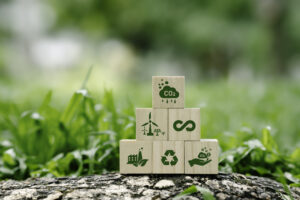Today, industry is responsible for approximately 20% of greenhouse gas emissions in the European Union.
Decarbonising the industrial sector requires a targeted approach, with solutions that in most cases must be tailored to meet the needs of each industry. Amongst these, electrification appears to be the most competitive option and the only one capable of aligning decarbonisation objectives with energy security needs.
This report presents the results of a specific feasibility study on the electrification of two key sectors in the Italian manufacturing industry: food and textiles.
Download the report “Electrification of industrial heat”
Electrification of process heat in Italy and Europe
In Italy, 68% of process heat demand is met using fossil fuels (this share rises to 75% in the EU). Of this demand, 31% is for low and medium temperature process heat (up to 200°C).
Feasibility study for the food and textile sectors
Both sectors excel in terms of profits and exports. They are predominantly composed of Small and Medium-sized Enterprises (SMEs account for 61.8% – food – and 81.9% – textiles – in terms of turnover). Moreover, both sectors use process heat at temperatures below 150-180°C and can therefore be electrified with existing technologies.
The study was conducted using a sector-specific energy model designed by ECCO, using the open source platform Osemosys. The analysis was carried out by validating literature-based hypotheses through interviews with experts from companies, suppliers of electrical technologies and process machinery, and energy service providers. The study presents different cost-effectiveness scenarios for replacing natural gas with electrified solutions. Starting from the most recent sectoral energy balances and modelling the energy transformations of carriers (gas, electricity) from their entry into the two sectors to final services (e.g. low or high temperature drying, with or without steam), the model optimises cumulative long-term costs, considering the evolution of CapEx and OpEx for technologies and in relation to projected gas and electricity price trajectories.
The cost of gas, electricity and technologies
The different price scenarios of energy carriers and heat production technologies drive the diffusion trajectories of technological innovations and their impact on electrification adoption. This approach provides for an electrification scenario of industrial processes over time, based solely on economic variables, which makes it possible to inform policies on how to intervene to facilitate electrification in terms of efficiency, environmental, and competitiveness objectives.
The proposed energy carrier price scenarios exclude the fiscal and parafiscal components of tariffs, while including estimates of the ETS1 mechanism costs in electricity pricing and ETS2 for gas.
The results of the scenario analysis indicate that:
- Electrifying process heat below 80°C is the most cost-effective solution by 2025, based on current electricity and natural gas prices.
- For temperatures above 80°C and processes requiring steam, the model indicates that the price differential between electricity and gas, defined not only by the relative prices of the two carriers but also by the efficiency of the technologies, prevents the recovery of the higher investment costs of electrification technologies until at least 2040.
- By 2040, the model sees an economic benefit in the complete electrification of heat processes.
In the case studies, where fiscal and parafiscal charges applied to electricity and gas tariffs, such as general system charges and excise duties, are also considered, the economic advantage of electrification is nullified even in processes below 80 °C. In fact, the weight of the fiscal and parafiscal components in the tariffs absorbs the benefits of the higher efficiency of heat pumps compared to the use of gas.
Policy framework
To accelerate the adoption of electrified solutions, the impact of incentivising policies on energy efficiency, investment support and their cost were analysed.
In particular, a reduction of the Weighted Average Cost of Capital1 to 4%, compared to the 10% assumed in baseline simulations, with financial policies and the introduction of a 50% capital incentive on the investment costs of high-efficiency electrical technologies, leads the model to adopt heat pumps five-years earlier, achieving an electrification rate of 86% by 2035 and long-term cost savings.
According to the analysis, the cost of these public support policies would amount to 2.3 billion euros for the state between 2025-2040.
Moreover, a fragmented legislative framework that, while supporting energy efficiency, also incentivises the installation of gas-powered technologies, such as combined heat and power plants, increases the risk of technological lock-in. Therefore, an integrated and coherent policy framework at the European and national level is needed to enable the adoption of these solutions, which support energy security and the competitiveness of the production system in the medium and long-term.
These levels should reinforce each other, maximising the adoption of high efficiency electrification as a solution for decarbonisation, energy security and industrial competitiveness. This framework should include:
- The adoption of an explicit electrification target for industrial process heat in the EU Electrification Action Plan and resulting legislation. This would provide certainty to investors. The Clean Industrial Deal already defines a cross-sectoral target of 32% by 2030 and identifies electrification as a solution to address the continent’s higher energy costs related to fossil fuel imports. This solution could also unlock the potential for the deployment and development of technological solutions in supply chains where the EU seems well positioned, as well as stimulate investment in energy consumption.
- A regulatory framework that favours electrification, which should:
-
- Ensure the diffusion of renewable energy in the electricity market with mechanisms that deliver a consumer price that corresponds to the costs of renewable technologies;
- Allow consumers to benefit from the cost and security advantages of renewable energy production by facilitating the decoupling of electricity and gas prices.
- Review imbalances between electricity and gas tariffs at the national level to remove current barriers to the integration of energy systems through industrial 6 process electrification.
- Expand and modernise electricity transmission and distribution networks to accommodate increased demand and respond promptly to connection requests.
- Facilitate the creation of lead markets for decarbonised products through a range of policies, including fiscal incentives and green public procurement.
Two basic elements must be considered when developing a policy framework:
- The development of skills and a qualified workforce.
- The development of a financial strategy, including the allocation of dedicated funds for industrial electrification under the European Competitiveness Fund, a more stringent allocation of ETS1 and ETS2 revenues, clear conditions for state aid that ensure adequate resources for the demonstration of innovative direct electrification solutions, and the development of smart grids from the Innovation Fund, in particular for small-scale projects and projects involving SMEs.
Electrification vs biomethane
Finally, solutions based on the use of biomethane were simulated. According to the scenarios, biomethane does not appear competitive compared to electrification as a decarbonisation solution for the food and beverage and textile sectors. Indeed, the price of biomethane is estimated to be in line with that of hydrogen, for which it is a direct substitute in processes that are difficult to electrify.
These results are confirmed by case study analyses conducted on six companies, four of which are in the food sector (three cheese factories and one brewery) and two in the textile sector, where electrification of low and medium temperature process heat is always technically feasible.
Download the report “Electrification of industrial heat”
Photo by Lalit Kumar








